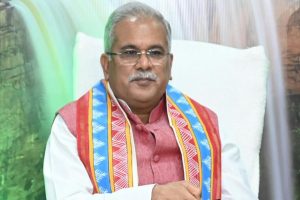The Pentagon has strongly denied the reports that the US spied on India’s anti-satellite or ASAT missile test by sending a reconnaissance aircraft from its base in Diego Garcia in the Indian Ocean to monitor the development. It, however, said that the United States was aware of India’s first test-fire of an anti-satellite missile.
“No US assets were spying on India. In fact, the US continues to expand its enduring partnership with India, resulting in enhanced interoperability and stronger economic ties,” US Defense Department spokesperson Lt Col David W Eastburn told news agency PTI.
Advertisement
Aircraft Spots, which monitors military air movements, had said that a US Air Force’s reconnaissance aircraft from its base in Diego Garcia went “for a mission in the Bay of Bengal to monitor India’s anti-satellite missile test”.
This was interpreted by many that the US spied on India’s ASAT test.
“I don’t think that it implies coordination between India and the US,” astronomer Jonathan McDowell from the prestigious Harvard-Smithsonian Center for Astrophysics told news agency PTI on the Aircraft Spots report.
“This implies that the US intelligence community were aware of the test in advance because to some extent they’re spying on India,” he alleged.
“Everybody spies on their friends as well as their enemies. That’s the way the world works these days. It would be surprising if the US were not detecting or observing the launch site and aware of activities preparing for the test. So one assumes that they knew it was coming,” he claimed.
Mr McDowell, who is a staff member at the Chandra X-ray Center and author and editor of Jonathan’s Space Report, an e-mail-distributed newsletter documenting satellite launches, said he has not looked into the issue of the aircraft, but it is certainly not surprising that the US would fly a sensor aircraft to try and observe the test.
The Pentagon, however, strongly denied the spying allegation.
“It’s a relationship so strong that no topic is off limits,” Lt Col Eastburn said.
“Both nations enjoy shared principles regarding our respect of sovereignty, free and fair trade, adherence to international norms, and peaceful resolution of disputes,” he said.
Air Force Space Command Commander Lt Gen David D Thompson told US lawmakers on Thursday that the United States was aware that India’s ASAT test was coming.
“First of all, we knew it was coming because of flight bans that India had announced and information they published previously. The launch occurred at 1:39 AM EST,” he told members of the powerful Senate Armed Services Subcommittee on Strategic Forces during a Congressional hearing.
“First of all, it was detected, characterised and reported by Air Force Missile Warning systems and Airmen at Buckley AFB. Immediately after the test (it struck the target vehicle), the Joint Space Ops Center and USAF 18 Space control Squadron began collecting information about the breakup of the vehicle,” Lt Gen Thompson said.
Prime Minister Narendra Modi on Wednesday announced that India has become the fourth country in the world to become a space superpower capable of taking out an enemy satellite in space.
In the Mission Shakti operation, the indigenously-built anti-satellite ASAT missile successfully destroyed a target satellite in the Low Earth Orbit (LWO), the PM announced.
Though the message was clear to all of India’s adversaries, the PM assured the global community that the technology will not be used “against anyone”.
Hours after the announcement, the US expressed concern over the issue of space debris.
According to a report in Reuters, acting US Defense Secretary Patrick Shanahan warned any nations contemplating anti-satellite (ASAT) weapons tests like the one India carried out on Wednesday that they risk making a “mess” in space because of debris fields they can leave behind.
Shanahan said the United States was still studying the outcome of a missile India said it launched at one of its own satellites.
(With PTI inputs)
















